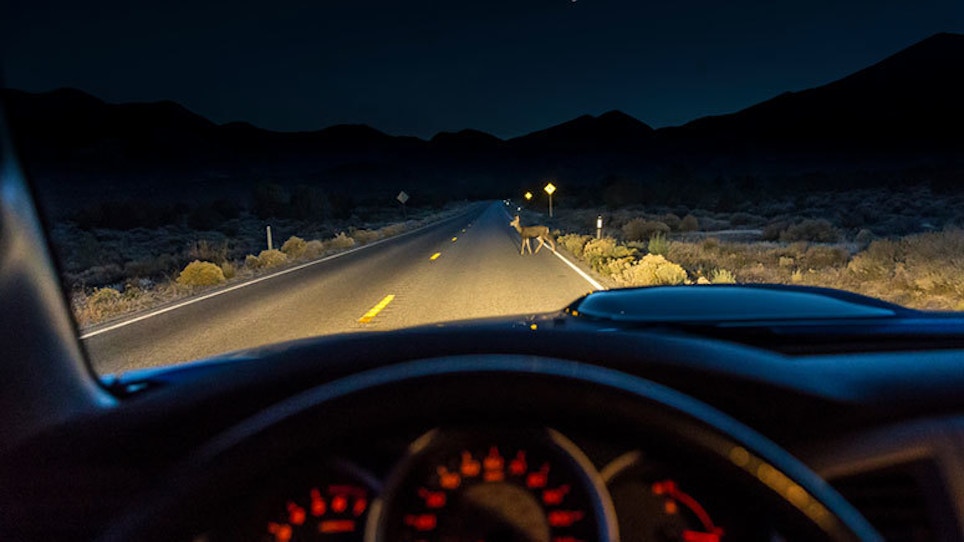The peak of rut can be a great thing in the woods, but it can also create problems on the road, with the likelihood of deer-vehicle collisions rises. Recently, The Quality Deer Management Association (QDMA) released tips based on scientific research to help drives avoid unwanted collisions.
"Bucks are covering a lot of ground during the rut in search of does, they're chasing many of those does, and until they are receptive, many of those does are running from the bucks," Kip Adams, QDMA's Director of Education & Outreach and a certified wildlife biologist, said in a press release. "A lot of these deer are crossing roadways in the process, and that's why we see a peak of deer-vehicle collisions in November."
QDMA reports more 1 million deer-vehicle collisions occur annually per year in the U.S., which results in approximately 200 human fatalities and nearly $2 billion in property damage. Though some accidents are impossible to avoid, below are tips released by the QDMA that could help.
Don't Rely On A "Deer Whistle"
University of Georgia researchers tested a variety of sounds of different frequencies and intensities to see how deer on a roadway reacted. These sounds, emitted from a specially equipped car, included a wide range of the high-frequency sounds that "deer whistles" are claimed to emit. In hundreds of trials, high-frequency whistles did not change deer behavior from the way they reacted when no sound was being emitted.
Be Vigilant
This is your most effective defense against a deer-vehicle collision. In areas where woodlands adjoin the roadway, be on the lookout in the ditches and forest edges for deer. Deer are most active in the hours around dawn and dusk, but during the fall breeding season they may enter roadways any time of day.
Recognize Local Danger Zones
Become familiar with local areas where woodlands create natural "funnel points" for deer near roadways, and pay extra attention to these areas. Once you see a deer on a roadside in an area you travel often, mentally mark that area as a danger zone when you return.
Use Your High Beams
When traveling at night in suburban or rural areas, use your high beams whenever possible to help you spot deer on the roadside. Do not allow the high beams to cause you to become complacent about seeing deer. Continue to be extra vigilant.
Slow Down Early
When you think you see a deer ahead, slow down and be prepared to completely stop if necessary. At night, deer may be blinded or confused by your headlights and are not sure if there is danger or where it is located. They may dart suddenly in front of you.
Blow Your Horn
Once you spot a deer standing on the roadside ahead, slow down and blow your horn. The structure of a deer's ears, and their ability to pivot each ear independently, makes them very good at pinpointing the locations of sounds. Blowing your horn repeatedly is likely to help the deer pinpoint the location of the threat and move away from the road. Again, slow down anyway - don't make any assumptions about how the deer will react.
Watch For The Next Deer in Line
During the rut, a doe that runs across the road is very likely to be followed by one or more bucks. If you see one deer run across the road ahead of you, slow down and be prepared to stop.
Do Not Swerve
No matter how vigilant you are, sometimes deer appear suddenly and swiftly from the woods close to your vehicle. If you were cautious and slowed down, this will help you avoid a collision. But if a collision appears unavoidable, do not swerve into the opposite lane or onto the shoulder of the road to avoid hitting the deer. If you reduced your speed due to the proximity of woods, the damage to your car may be lessened. But if you swerve into oncoming traffic or onto the shoulder, where other obstacles may be in your path, you may worsen the situation.






